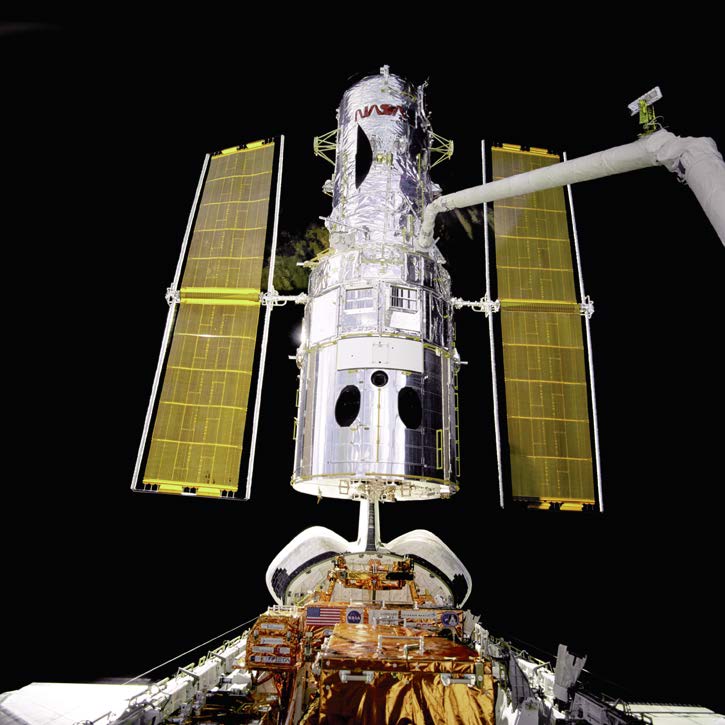How powerful are astronomers' telescopes?Before Lippershey and Galileo, magnification instruments had not been used to investigate objects beyond Earth. Since their time, far more powerful visible-light telescopes have been developed along with other types of telescopes capable of “seeing” invisible forms of radiation, such as infrared, ultraviolet, radio, X-ray, and gamma-ray. Today's optical telescopes (made from glass, lenses, or mirrors) are 100 million times more sensitive than Galileo's telescope. For example, the Gran Telescopio Canarias (GTC) on the Canary Islands in Spain is the world's largest single-aperture optical telescope. It stands 134 feet (41 meters) tall and weighs 400 tons. The Hubble Space Telescope, named after astronomer Edwin Hubble and launched into space in 1990, orbits Earth at a speed of 5 miles (8 kilometers) per second, and beams images back to Earth. Because its position is above the atmosphere (which distorts and blocks the light that reaches Earth) it is able to view the universe more thoroughly and clearly than ground-based telescopes. 
The Hubble Space Telescope is seen here as it is being serviced by a space shuttle. (NASA) |